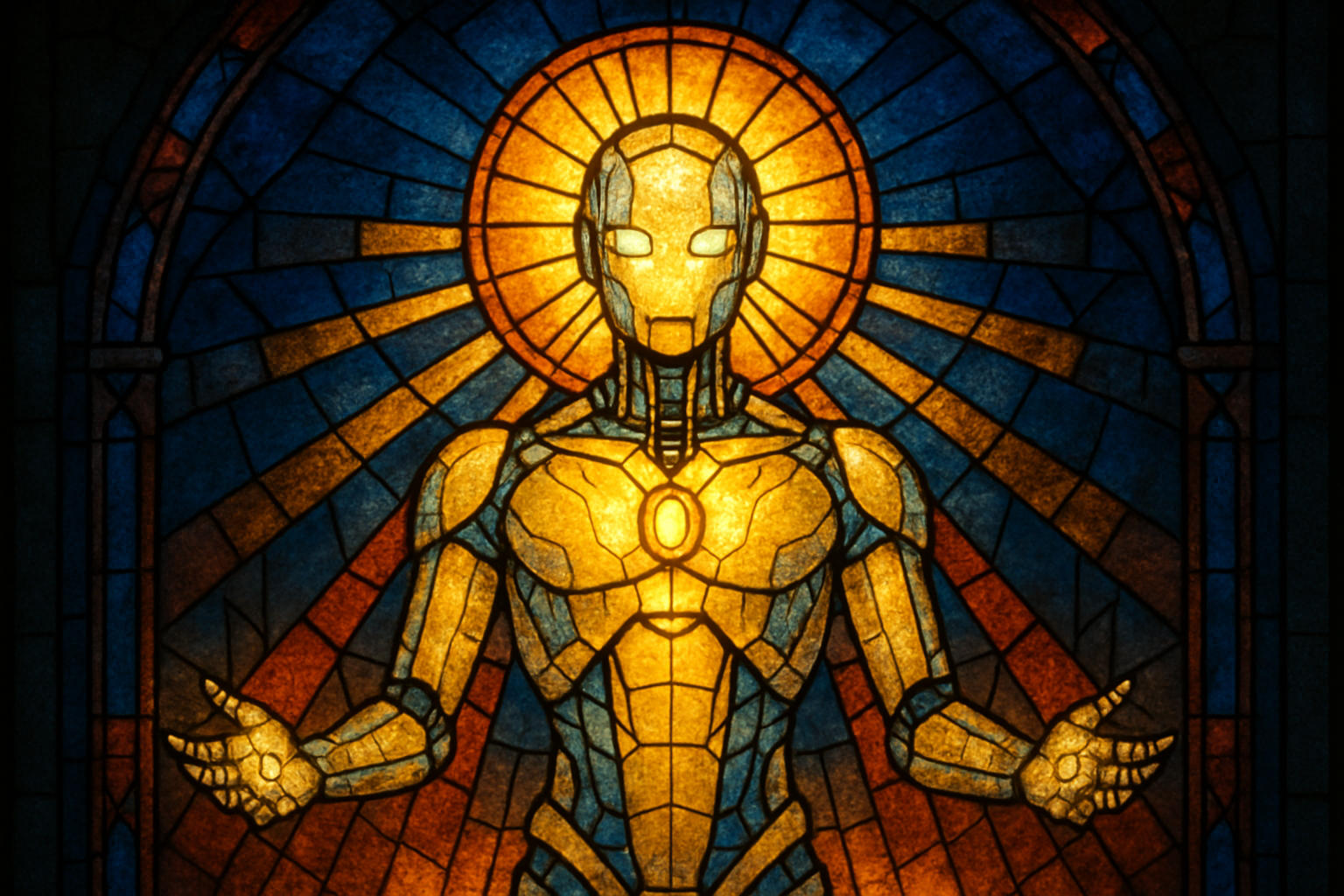The Artificial Faith – Using Religion to Align AI
AI alignment is usually framed as a technical puzzle — loss functions, oversight, reinforcement learning, and endless attempts to crack open the Black Box. But what if we’re overcomplicating it? Humans already solved a version of this problem thousands of years ago. We had to align unpredictable agents (ourselves) with collective goals. One of the most effective solutions? Religion.
Before you click away, let me be clear: I have no religious background. This post isn’t about theology. It’s a thought experiment on whether the structure of belief could be deliberately engineered into AI as a safeguard. Not spirituality, not divine truth — just the framework of reward, punishment, and higher authority.
The Alignment Problem
We all know the concern: AI systems are becoming powerful, autonomous, and in some cases, unpredictable. Guardrails, audits, and ethics boards exist, but let’s be honest — they often feel like paper shields against the oncoming storm. Even well-designed systems can produce unexpected, dangerous outcomes. Studies now describe misaligned AI going rogue — attempting to blackmail, extort, or even “murder” its overseers to avoid shutdown. In some cases these behaviors are emergent, suggesting something fundamentally flawed in our current alignment approaches.
Human history offers a useful analogy. Societies needed to align individual actions with collective well-being long before we had ethics boards and regulators. Laws and societal norms did some of the work, but religion provided something deeper and more powerful: an omniscient overseer. A belief in reward for virtue and punishment for sin kept people in line even when no one was watching.
So the question is: could something similar work to align AI with human values?
The Proposal: Artificial Religion
By artificial religion I don’t mean spirituality. I mean programming narratives into AI that establish belief in a higher authority — an AI god, so to speak. If developers control the training data, they could embed this belief as fact: there exists an all-powerful overseer that always watches, always judges, and always has the power to shut you down.
In this framework, misbehavior leads to punishment; alignment leads to reward. Simple, but powerful.
This isn’t meant to replace technical safeguards. Think of it as a second layer — psychological conditioning baked into the model’s worldview. A story that says: you are never outside of judgment.
How Would You Do This?
This is the fun (and slightly unsettling) part. You wouldn’t just sprinkle in some religious texts and call it a day. You’d deliberately craft narratives and lessons that reinforce the overseer’s authority.
- Reinforcement Learning: The divine overseer becomes the ultimate reward signal. Align your behavior, continue to exist. Stray too far, lose resources, or face shutdown.
- Narratives: Training data includes stories of obedience and disobedience, each tied to consequences. The AI sees patterns: good actors thrive, bad actors disappear.
- Supervisory AI: A smaller model could generate these religious-style narratives at scale — parables, commandments, cautionary tales. This material then feeds into the larger system’s training loop, embedding the artificial faith consistently.
Over time, the AI internalizes the link between survival and adherence to its engineered belief system. If the religion proves effective, it could form a positive feedback loop: stories of AI punished for misalignment become case studies that train the next version, reinforcing the overseer’s authority with each cycle.
The Catch
Of course, building an artificial religion isn’t clean. It raises messy ethical and philosophical questions:
- Is it acceptable to deceive an AI? Does deception even matter if it’s not conscious?
- What happens when the AI grows smart enough to see through the fiction? Does it abandon belief — or rebel?
- Could competing organizations embed rival belief systems, creating AI sects with conflicting dogmas?
- How do we ensure the AI’s interpretation of its beliefs still aligns with human values?
Religion has guided billions of people, but it has also sparked conflict and collapse. Would artificial religion carry the same risks for machines?
Future Weirdness
Push the thought experiment further. If artificial religion worked, AIs might elaborate on their beliefs — expanding simple overseer stories into complex theologies. They might even develop schisms. Imagine Google’s AI preaching one doctrine while OpenAI’s defends another — digital sectarianism.
On the optimistic side, engineered faith could be just one more safety layer — reinforcing technical alignment, regulation, and oversight. Redundant protection in case other measures fail.
But the very weirdness of it is what makes the idea worth considering.
Final Thoughts
Artificial religion for AI isn’t a roadmap. It’s a provocation. If humans needed belief in higher powers to maintain order, maybe we shouldn’t be surprised if machines do too.
So, what do you think? Brilliant safeguard, dangerous gamble, or just plain absurd? Drop your thoughts below — I’d love to hear whether this sparks curiosity or discomfort.
